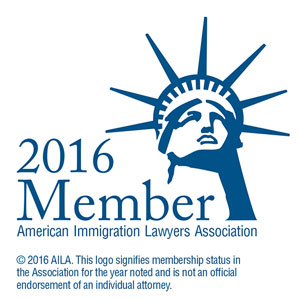Matter of G- Inc.: Clarifying the Role of the Function Manager Under the L-1 Visa
By: Cyrus D. Mehta and Sophia Genovese
The Administrative Appeals Office (AAO) recently adopted a decision, Matter of G- Inc., Adopted Decision 2017-05 (AAO Nov. 8, 2017), providing important guidance to U.S. employers who transfer function managers under the L-1 intracompany visa. The L-1 visa allows a U.S. employer to transfer an executive or manager (L-1A) or a worker with specialized knowledge (L-1B) from a foreign subsidiary or affiliate.
As corporate structures are changing from hierarchical to flat in a globally interdependent world, the role of the function manager, who manages a function rather than people, has become increasingly relevant under L-A visa classification. A flat organization has few or no levels of management between management and staff level employees. The flat organization supervises employees less while promoting their increased involvement in the decision-making process. Building upon momentum gained from its decision in Matter of Z-A-, Adopted Decision 2016-02 (AAO Apr. 14, 2016), the AAO in Matter of G- held that:
(1) To support a claim that a beneficiary will manage an essential function, the petitioner must establish that the function is a clearly defined activity and is core to the organization.
(2) Once the petitioner demonstrates the essential function, it must establish that the beneficiary’s position meets all criteria for “managerial capacity” as defined in 101(a)(44)(A) of the Act. Specifically, it must show that the beneficiary will: primarily manage, as opposed to perform, the function; act at a senior level within the organizational hierarchy or with respect to the function managed; and exercise discretion over the function’s day-to-day operations.
Under its prior decision in Matter of Z-A-, the AAO held that an L-1A intra-company manager who primarily manages an essential function can also be supported by personnel outside the United States within an international organization who perform the day to day administrative and operational duties. This is possible in the internet age where communications can take place online and through Skype rather than face to face in a physical location. The foreign national manager seeking an L-1A visa extension in Matter of Z-A-, was the President and Chief Operating Officer of the U.S. Petitioner whose parent company was in Japan. The USCIS Service Center denied on the ground that only a small number of employees who worked in the U.S. would support the manager and relieve him from performing the duties of the function. The key issue on appeal was whether the Petitioner established that this manager would be employed in a qualifying “managerial capacity” pursuant to INA § 101(a)(44)(A). The AAO reversed the Service Center’s decision, noting that the Beneficiary would continue to rely on the support of eight staff abroad and two in the U.S. to relieve him of day-to-day operational and administrative activities. The AAO stated that despite the fact that the Beneficiary “may be required to perform some operational or administrative tasks from time to time, the Petitioner established by a preponderance of evidence that the Beneficiary will primarily manage an essential function, while day-to-day, non-managerial tasks will be performed by a combined staff of 10 employees of the Petitioner and its parent company, located in the United States and Japan, respectively.” Matter of Z-A-, at 7.
In its most recent decision in Matter of G-, the AAO further elaborates upon the contours of the “function manger.” Although Matter of G- was decided within the context of INA § 203(b)(1)(C) (where a U.S. employer can petition to permanently transfer a qualified foreign employee to the United States to work in an executive or managerial capacity), the AAO stated in its decision that the function manager analysis equally applies to L-1A function managers. Matter of G-, at 2, note 6.
The foreign manager seeking immigrant classification under INA § 203(b)(1)(C) in Matter of G- was the Director, Financial Planning and Analysis (FP&A) at a large multinational technology corporation. The company first transferred the Beneficiary to the U.S. on an L-1A visa to seek business opportunities and foster growth of the company in the U.S. markets. After a few years of success, the company decided to petition for the worker to permanently reside in the U.S. under INA § 203(b)(1)(C). The Petitioner explained in their I-140 petition that the Beneficiary would continue to direct and develop revenue forecasts and analysis for the entire company, lead mergers and acquisitions, and oversee strategic pricing analyses, among other managerial duties. However, the USCIS denied the Form I-140, finding that the Petitioner did not establish that the Beneficiary would be employed in a managerial role. It is not unusual for one Service Center of the USCIS to approve the L-1A visa and another Service Center to deny the I-140 petition. Upon review, the AAO reversed, and sought to clarify the role of a function manager.
INA § 101(a)(44)(A) defines “managerial capacity” as:
[A]n assignment within an organization in which the employee primarily-
(i) manages the organization, or a department, subdivision, function, or component of the organization;
(ii) supervises and controls the work of other supervisory, professional, or managerial employees, or manages an essential function within the organization, or a department or subdivision of the organization;
(iii) if another employee or other employees are directly supervised, has the authority to hire and fire or recommend those as well as other personnel actions (such as promotion and leave authorization) or, if no other employee is directly supervised, functions at a senior level within the organizational hierarchy or with respect to the function managed; and
(iv) exercises discretion over the day- to-day operations of the activity or function for which the employee has authority. A first-line supervisor is not considered to be acting in a managerial capacity merely by virtue of the supervisor’s supervisory duties unless the employees supervised are professional.
(emphasis added).
In its decision, the AAO noted that “essential function” is not defined anywhere in the INA. Instead, it relied on the Merriam-Webster Dictionary definitions of “essential” and “function” in proceeding with their analysis, concluding that an essential function must be a core activity of a petitioning organization. Relying on these definition, the AAO first found that the Petitioner must “(1) describe with specificity the activity to be manage, and (2) establish that the function is core to the organization.” Matter of G-, at 3. The AAO further recognized that an organization could have more than one core activity “such as the manufacture or provision of an end product or service, and research and development into other products or services.” Matter of G-, at 3, note 11.
Once the Petitioner can establish this essential function, it must then prove that the Beneficiary meets all of the four criteria of “managerial capacity” under INA § 101(a)(44)(A). The AAO held that in addition to defining with particularity the activity to be managed and establishing that it is a core function of the organization, the Petitioner must also show that the Beneficiary will primarily manage (and not perform) the function, that the Beneficiary will hold a senior level at the organization or with respect to the function managed, and that the Beneficiary will exercise discretion with the function’s daily operations. Matter of G-, at 4.
In applying their new function manager analysis to the case at bar, the AAO found that the FP&A Director was clearly a function manager under INA §101(a)(44)(A). First, it found that “financial planning and analysis” qualified as a function within the organization as it was clearly defined with specificity and indicated a clear goal of generating data to assess the company’s revenue. Second, the AAO found that the FP&A function was essential to the company, where the Beneficiary’s work would be relied upon by the company’s executives and board of directors in making strategic decisions in mergers and acquisitions. Third, the AAO found that the Beneficiary would primarily manage the function where he would “develop and direct revenue forecasts and analysis for the worldwide organization, lead mergers and acquisitions, and oversee strategic pricing analysis.” Matter of G-, at 5. The AAO continues that the Beneficiary will be supported by six direct and three indirect reports who will “perform the routine duties associated with the FP&A function.” Id. Critically, the AAO finds that even though the Beneficiary directly supervises some of his subordinates, he still primarily manages the function. Fourthly, the AAO found that the Beneficiary will act at a senior level within the organization and with respect to the function, where he reported only to the CFO and CEO and worked closely with other senior executives and managers. Finally, the AAO found that the Petitioner clearly established that the Beneficiary will have discretionary authority over day-to-day operations where the Beneficiary will establish policies, goals, and oversee mergers and acquisitions.
Matter of G- helps to further define the contours of the function manager, and can be used as a guide to U.S. petitioners seeking to establish that the foreign worker meets the criteria under INA § 101(a)(44)(A). While Matter of G- involved a function manager, the AAO’s interpretation of what constitutes a function within an organization could arguably also be deployed to executives under INA 101(a)(44)(B) who can qualify for an L-1A visa by directing a “major component or function of the organization.” The Petitioner in the instant matter was a large multinational corporation with over 8000 employees worldwide. The USCIS has historically been less receptive to function manager claims of smaller corporations. It may be more challenging for a smaller entity to establish that a function is a clearly defined activity and is core to the organization as well as to demonstrate that the manager is performing at a senior level. Still, petitioners should not fear making the argument that function managers of smaller corporations also meet the criteria. In Brazil Quality Stones, Inc. v. Chertoff, 531 F.3d 1063 (9th Cir. 2008), the Ninth Circuit Court of Appeals found that although size is a relevant factor in assessing whether a company’s operations are substantial enough to support a manager, “an organization’s small size, standing alone, cannot support a finding that its employee is not acting in a managerial capacity.” See also INA § 101(a)(44)(C) (“[i]f staffing levels are used as a factor in determining whether an individual is acting in a managerial or executive capacity, the Attorney General shall take into account the reasonable needs of the organization, component, or function in light of the overall purpose and stage of development of the organization, component, or function.”). Notwithstanding this acknowledgement, the Ninth Circuit in Brazil Quality Stones affirmed the USCIS’s denial of the L-1A petition by agreeing that the petitioner did not meet its burden in primarily managing the essential function rather than performing the day to day duties, and the small size of the entity probably undermined the manager’s ability to meet this burden. Subsequent to Brazil Quality Stones, though, the AAO issued Matter of Z-A- as an adopted decision, which has also been acknowledged in Matter of G-. It is now possible to demonstrate that the function manager is being supported by personnel in the foreign organization who perform the duties of the function, and this could be particularly helpful in a small organization with few staff in the U.S. The AAO took pains to note that INA 101(a)(44)(A)(iii) is worded in the disjunctive, requiring a function manager to occupy “a senior level within the organizational hierarchy or with respect to the function managed.” Matter of G-, at 6, note 15. In a small organization, the function manager may establish seniority with respect to the function managed rather than within the organizational hierarchy. So long as petitioners clearly define the function, establish that the function is essential to the organization, explain how the beneficiary will primarily manage this function at either a senior level at the organization or with respect to the function managed, and that the beneficiary will act with wide discretion, the L-1A petition could stand a chance of being approved under Matter of G-.
Despite the economic benefits that accrue in fostering global corporate activities, the L-1 visa has been heavily criticized over the past few years, with opponents arguing that it threatens domestic employment and “floods the U.S with cheap foreign workers.” The Trump Administration has taken aim at the L-1 visa and has begun to publicly release data about companies who utilize the L-1 visa, increase site visits to companies that employ foreign workers, and has rescinded guidance instructing USCIS officers to give deference to previously approved petitions upon renewal. Under President Trump’s Buy American and Hire American Executive Order, there is an emphasis on hiring American workers over foreign workers and for corporations to have their operations in America. But the reality is quite the opposite. U.S. businesses can thrive, compete, prosper, create new jobs and benefit the American consumer through international operations, made that much easier with rapidly evolving internet technology and innovative organizational structures. It is thus refreshing that the AAO has recognized this reality by adopting Matter of G- and Matter of Z-A-. An adopted decision establishes policy guidance that applies to and binds all USCIS employees. USCIS personnel are directed to follow the reasoning in this decision in similar cases.




